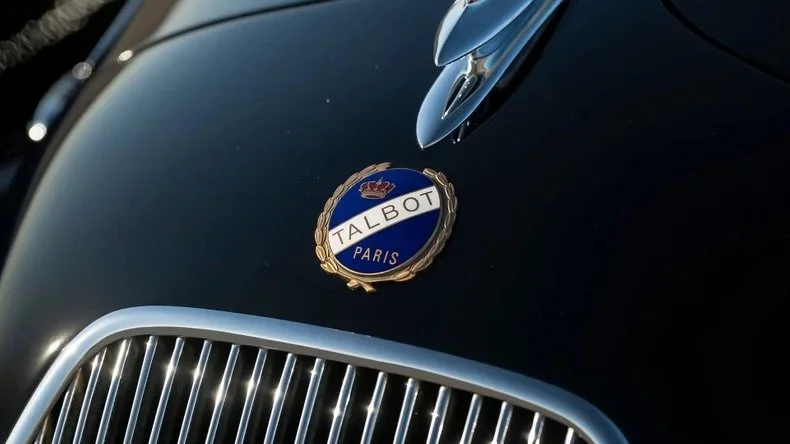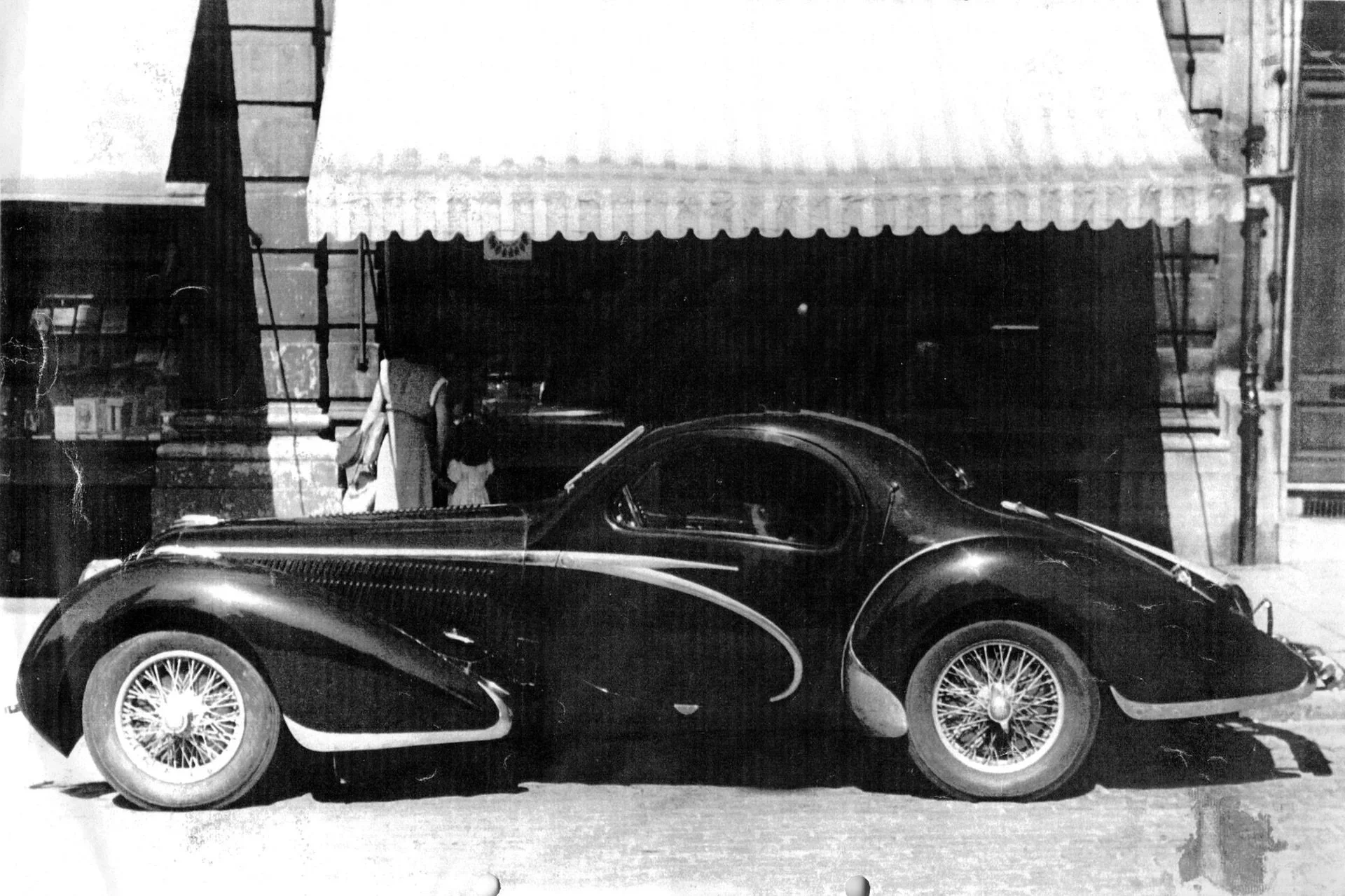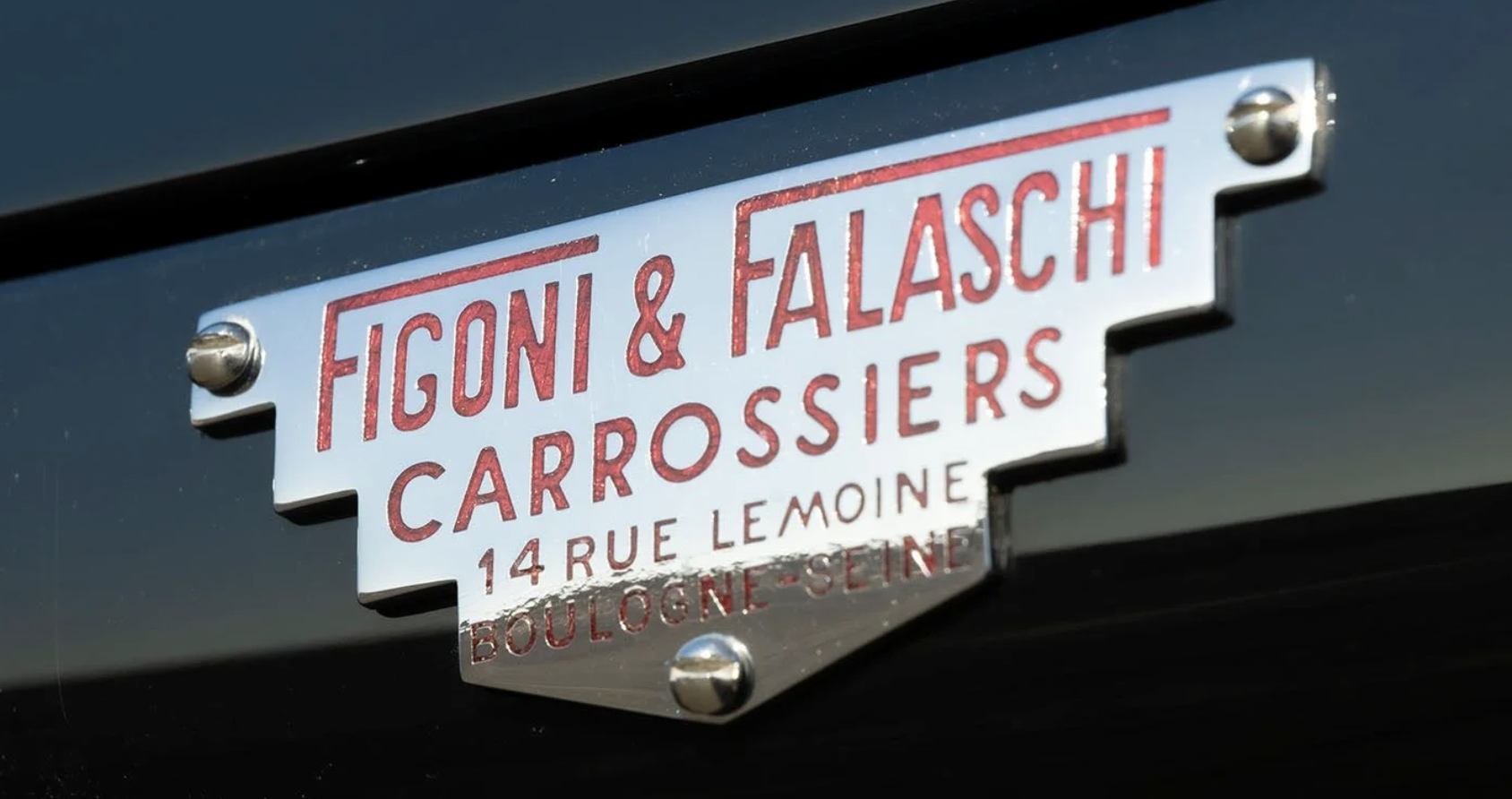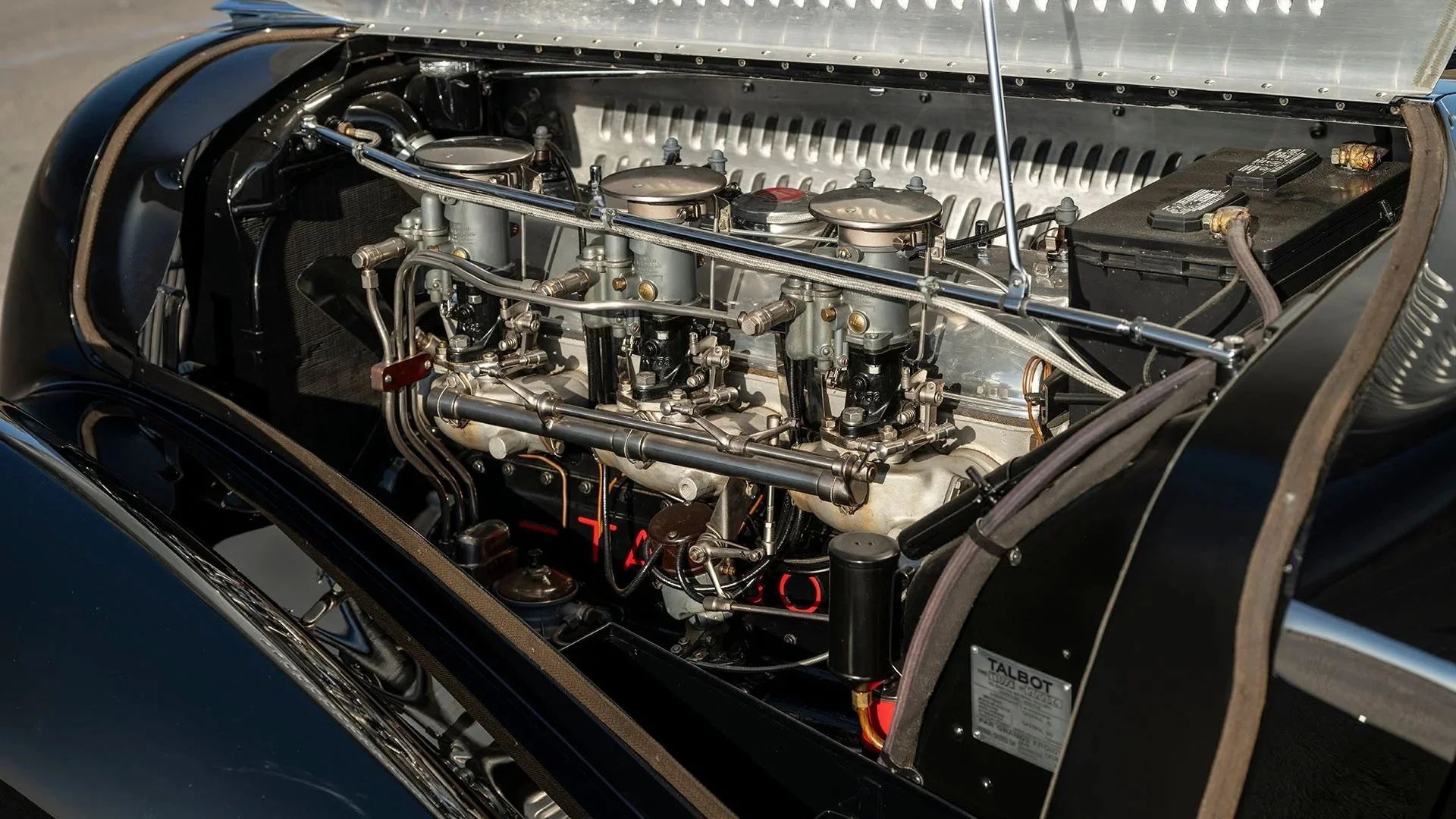1938 Talbot-Lago T150 C Lago Special
Chassis No.10797
Engine No. 13609
Few cars capture the spirit of prewar French design and performance quite like the Talbot-Lago T150 C. And among the handful of surviving examples, none rival the singular presence of chassis 90034 - the only long-wheelbase “Teardrop” coupe built by legendary coachbuilder Figoni et Falaschi in their most dramatic, exposed-wheel configuration. Talbot-Lago's resurgence in the mid-1930s was led by the bold vision of Anthony Lago, an Italian-born engineer and entrepreneur who transformed the struggling marque into a powerhouse of style and speed. With a newly developed 4.0-liter straight-six engine, a pre-selector gearbox, and a focus on racing and design innovation, Talbot-Lago models quickly gained notoriety for their sophistication and performance.
For coachwork, Lago turned to fellow Italian ex-pat Joseph Figoni, whose creations for the Paris-based firm Figoni et Falaschi defined French automotive elegance in the Art Deco age. Among their most famous designs was the Goutte d’Eau or “Teardrop” coupe, a body style that flowed like liquid metal and came to symbolize prewar automotive artistry. Built in September 1938, chassis 90034 was commissioned by Antoine Schumann, a Parisian banker and gentleman racer, through Talbot-Lago sales agent Luigi Chinetti (later a founding force behind Ferrari’s U.S. presence).
The car was specified with bespoke details: metallic dark blue paint, tobacco leather upholstery, freestanding headlights, a sliding sunroof, removable rear fenders, and a chromed spear sweeping across the doors, with a unique “Lago Special” script emblazoned across the tail. Though it shared much with Figoni’s famous short-chassis “teardrops,” the extended 116-inch wheelbase gave the car a longer, more elegant rear profile and smoother proportions throughout a one-off masterpiece in every sense.
When the Nazis invaded France in 1940, Schumann hid the car and fled the country. From Egypt, he joined the French Resistance, learned to fly, and flew combat missions against Field Marshal Rommel in North Africa. After the war, Schumann was reunited with the Talbot-Lago before selling it in 1946 or 1947. Its next owner, Frédéric Damman, a Belgian clothing magnate and gentleman racer, entered the car in the 1948 24 Hours of Spa, where it finished 11th overall and won its class in the 4-liter category - an impressive result for a car nearly a decade old. Damman held on to the car until 1979, after which it passed through a few hands before selling at auction in 1981 to a long-term owner who eventually relocated it to South America.
Following mechanical servicing in Switzerland in 2004, the car was sold in Monterey in 2005 to Texas collector John O’Quinn for $3.685 million. O’Quinn undertook a sensitive restoration, preserving the original tobacco leather interior and wood trim, while refinishing the body in black. The car was mechanically sorted to concours standard and retained the majority of its original components. After O’Quinn’s passing, the car sold again in 2010 for $4.62 million. Today, it remains one of the finest Talbot-Lago teardrops in existence, not only for its beauty, but for its uninterrupted chain of ownership, successful racing pedigree, and extraordinary originality. In 2025, chassis 90034 was purchased by Tom Maoli at Broad Arrow’s Villa d’Este Auction, where it captivated collectors and historians alike. Now a centerpiece of his celebrated collection, the car represents the pinnacle of prewar automotive design. With its flawless coachwork, authentic finishes, and nearly mythical provenance, this one-off Talbot-Lago remains one of the most breathtaking and historically significant motorcars ever built.
History and Significance
Design Differences
Long-wheelbase Colonial Tourer body with elevated ground clearance
Dual chain drive visible from the rear — signature of early export-spec Mercedes
Upright radiator, large brass lamps, and open cockpit layout
Finished in period-appropriate livery
Retains factory coachwork tag, extremely rare for the era
Exterior
Driver-focused layout with high-mounted controls and instruments
Original floorboards and paneling remain in place
Seating for four in a classic touring configuration with exposed driving position
Restored with attention to historical detail, now showing gentle patina
Interior
5,623 cc T-head inline 4-cylinder engine
40 horsepower at 1,230 rpm
Dual camshaft design for better breathing and efficiency — highly advanced for its time
Pressurized cooling ensures reliable touring performance
Dual ignition system: magneto and battery
Designed for long-distance, rugged travel in varied conditions
Robust chain-drive layout engineered for challenging colonial roads
A true Brass Era touring car — reliable, smooth, and capable of regular use on historic rallies
Engine/Performance
Gallery









